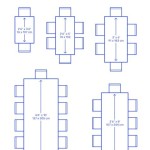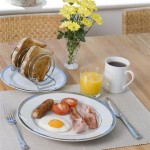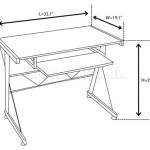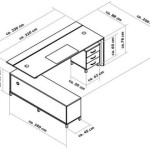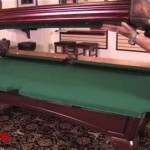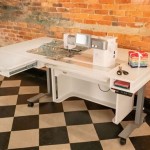How to Set a Formal Table for Dinner: A Comprehensive Guide
Setting a formal table is an art form, a practice rooted in tradition and designed to enhance the dining experience. It signals respect for guests, elevates the occasion, and contributes to an atmosphere of elegance and sophistication. While it may seem daunting at first, understanding the principles behind a formal table setting and following a systematic approach can make the process both manageable and rewarding.
The formal table setting is more than just arranging silverware; it's about creating a visually appealing and functional arrangement that anticipates the needs of each diner. Every element, from the placement of the plates to the selection of glassware, plays a role in creating a cohesive and elegant presentation. The following guide provides a detailed explanation of how to create a classic, formal table setting.
Key Point 1: The Foundation – Understanding Plate Placement and Linens
The foundation of any table setting, formal or informal, begins with the plates. The charger plate, also known as a service plate, is not used for eating but serves as a base for the other plates. It is positioned in the center of each place setting and remains on the table throughout the appetizer and soup courses. The dinner plate is then placed directly on top of the charger plate when the main course is served. If soup is to be served, a soup bowl is placed on top of the dinner plate.
Bread plates are placed to the upper left of the place setting, above the forks. A small bread knife is typically placed horizontally across the bread plate, with the blade facing the diner's right.
Linens are crucial for a formal table setting. A tablecloth, preferably made of white or ecru linen, sets the tone for the entire meal. It should be impeccably clean and pressed. Placemats are generally not used in formal settings. Napkins, typically linen or high-quality cotton, are placed to the left of the forks or on the dinner plate, depending on the style. Decorative napkin rings can add a touch of elegance.
The size and shape of the table cloth should be considered carefully. It should dangle appropriately ensuring that all sides are even. Many consider a drop of 12 inches sufficient. It is essential to iron the cloth before use, a wrinkled cloth has the potential to ruin the appearance of an otherwise flawless formal table setting.
The napkin should be clean, ironed, and folded neatly. It can be folded in a variety of ways, but it is often best to keep the folds simple and functional. Complex folds are often counterproductive, making it difficult for the diner to unfold and use appropriately.
Key Point 2: Silverware Arrangement – Order of Use and Precision
Silverware placement follows a logical order, based on the order in which the courses will be served. The rule of thumb is to work from the outside in, using the outermost utensils first. Forks are placed to the left of the plate, and knives and spoons are placed to the right. The cutting edge of the knife should always face the plate.
Typically, the dinner fork is placed furthest to the left, followed by the salad fork if a salad is served before the main course. If an oyster fork is needed, it is placed to the right of the spoons. To the right of the plate, the dinner knife is placed closest to the plate, followed by the soup spoon. A dessert spoon and fork are often placed horizontally above the plate; the spoon points to the right, and the fork points to the left.
All silverware should be aligned at the bottom, creating a uniform and visually appealing appearance. The distance between each utensil should be consistent, and the entire arrangement should be symmetrical. Silverware should be polished so that there are no water spots or fingerprints. Tarnished silverware can detract from the presentation.
The specific types of silverware used will depend on the menu. If fish is served, a fish fork and knife are included. If another first course is served, the appropriate spoon or fork is placed accordingly. This underscores the importance of planning the menu before setting the table so it can be determined which utensils should be added.
Some formal settings utilize a side plate for butter and bread. In this case, a butter knife would be placed on the plate. The primary function of the butter knife is to transfer butter to the diner’s plate before being used to spread it onto the piece of bread.
Key Point 3: Glassware Selection and Presentation – From Water to Wine
Glassware placement is equally important in a formal table setting. Glasses are typically arranged to the upper right of the place setting, above the knives and spoons. The water glass is placed closest to the diner, followed by the wine glasses, arranged in descending order of size.
A typical formal setting includes a water glass, a red wine glass, and a white wine glass. If champagne is to be served, a champagne flute is added. The placement of these glasses should be such that they follow a slight arc. Dessert wine glasses are often brought out with the dessert course.
The glasses should be sparkling clean and free of water spots. If glassware is being washed by hand it should be dried immediately after washing with a microfiber cloth to prevent residual water marks or streaks from appearing on the surface of the glass. The type of glass used is important and should ideally match the style and quality of the other elements. The correct type of wine glass helps to bring out the aroma and flavor of the wine. Cheap or mismatched glassware can detract from the overall presentation.
It is important to avoid overfilling glasses. Wine glasses should ideally be filled to about one-third to one-half full, allowing room for the wine to breathe and for the diner to swirl the wine and appreciate its aroma. Water glasses can be filled a bit higher, but still not to the brim.
The appearance of your glassware directly impacts the diner’s experience. Attention to detail will ensure a beautiful and polished table setting that will enhance the enjoyment of both food and wine.
Beyond the basic elements, there are several additional details to consider. Centerpieces, such as floral arrangements or candelabras, can add to the ambiance of the table. However, it is important to choose a centerpiece that is not too tall and does not obstruct the guests' view of each other. Salt and pepper cellars are typically placed within easy reach of all diners. Place cards can be used to indicate seating arrangements, adding a personalized touch.
Lighting plays a crucial role in the overall atmosphere. Soft, warm lighting is ideal for creating a welcoming and intimate setting. Candles can add a touch of romance and elegance. The goal is to create a space where guests feel comfortable and relaxed.
The key to setting a successful formal table is to pay attention to every detail. From the quality of the linens to the placement of the silverware, each element contributes to the overall impression. While it may take practice to master the art of formal table setting, the effort is well worth it when you see the smiles on your guests' faces as they sit down to enjoy a beautifully presented meal.
Ultimately, the goal is to create an environment that focuses on the occasion, on the company of guests, and on the enjoyment of food and wine. By understanding and implementing formal table setting principles, you ensure that the foundation for a truly memorable dining experience has been laid.
Consistency and uniformity are paramount. Each place setting should mirror the others, creating a sense of harmony and order. Even minor discrepancies can disrupt the overall aesthetic. It's a good idea to double-check each setting before guests arrive, ensuring that everything is in its proper place.
Another aspect to consider is the practicality of the setting. While aesthetic appeal is important, the table should also be functional and comfortable for the diners. Ensure that there is enough space between each place setting to allow guests to move freely and comfortably. Avoid overcrowding the table with too many decorations or unnecessary items.
Remember, the purpose of a formal table setting is not just to impress guests, but to enhance their dining experience. By paying attention to the details and creating a welcoming and elegant atmosphere, you can make your guests feel special and appreciated. It's an opportunity to show your care and attention, creating a lasting impression.

Place Setting Diagram For A Formal Dinner Krayl Funch

Proper Table Setting 101 Everything You Need To Know Emily Post

Diagram For Formal Table Setting Or Place Settings
How To Set A Table For Dinner With Cloth Napkins Silverware Plates And Cups Quora
How To Set A Table From Basic Formal

How To Set A Table With 5 Place Setting Templates For Every Event Formal Dinner Settings Breakfast

Free Table Setting Template For 2024 Set A Perfect

Formal Table Place Setting Chart Imom Settings

How To Set Up A Formal Table Setting San Diego Creative Events

How To Set The Table A Modern Primer

